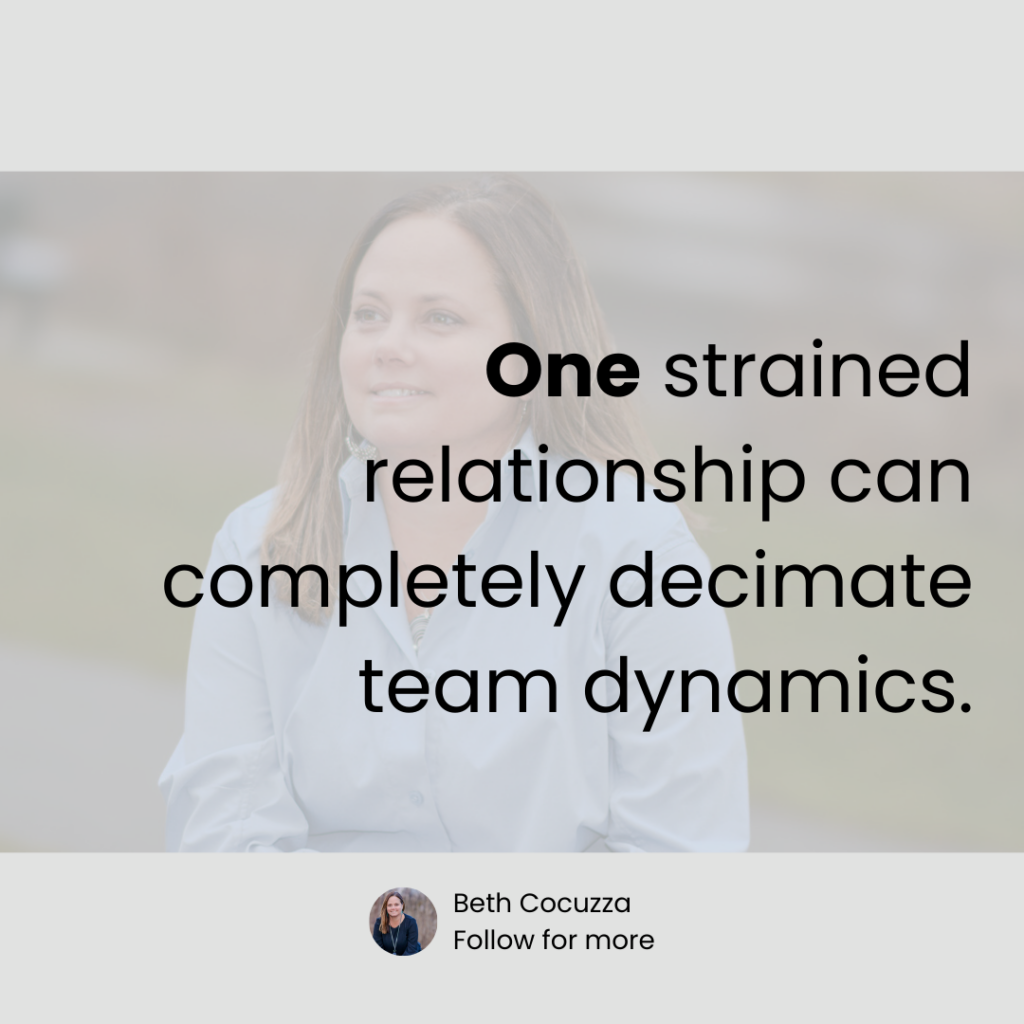
One strained relationship can completely decimate team dynamics.
Have you ever had that ONE person that completely rubs you the wrong way?
Let me tell you a story of my colleague from years ago; we’ll call her Janice.
Janice was a member of the leadership team at a small organization and when Randi came on board–and BOY did they butt heads. Randi came into the organization like gangbusters–approaching the work as if she had something to prove. She would ask for input and then say “well, it’s my decision, so I’m doing the opposite.” She was stubborn, defensive, and set her team up to be “us against them.” Her standard MO was “this is my area of expertise, so I’ll make the call here.”
At first Janice was incredibly annoyed and, frankly, pretty dismissive. Who was she to come in and stir up trouble? To date, it had been a pretty collaborative leadership team–across all departments. Everyone worked well together, pushed one another to think differently about things, and sought genuine input from one another. When they made decisions that countered the input received, they circled back to thank the person for their feedback and share the rationale for the decision.
Janice probably would have continued dismissing Randi but she was concerns about the impact the conflict was having on the broader team. Janice respected Randi’s team and it frustrated her that the chasm between Randi and Janice was creating a feeling of isolation for those colleagues. So she decided to try to work on it.
The strategy Janice used is one I recently suggested to a client who is in a similar situation. I call it “befriend your nemesis.” It’s not quite the same as “keep your friends close and your enemies closer.” Instead, the idea is to see what happens when you work together on something as opposed to working solely on things we own.
Janice approached Randi and shared what she had observed about Randi’s strengths. She then invited her to collaborate on a project that would benefit from her expertise. She made it clear that she wasn’t asking Randi for feedback on a project she owned, and she wasn’t asking Randi to own a new project. Rather, she was suggesting that working together on this project would be good for the organization and would allow them to better understand each other’s ways of working.
This approach put Janice and Randi on the same team. It broke down some of the barriers that had been set up. Were Janice and Randi best buds after the project? No. But they had one success under their belts and something positive to build on rather than their constant negativity.
Have you ever tried to “befriend a nemesis?” How did it go? Do you have any advice for someone who is going to try this strategy?
0 Comments